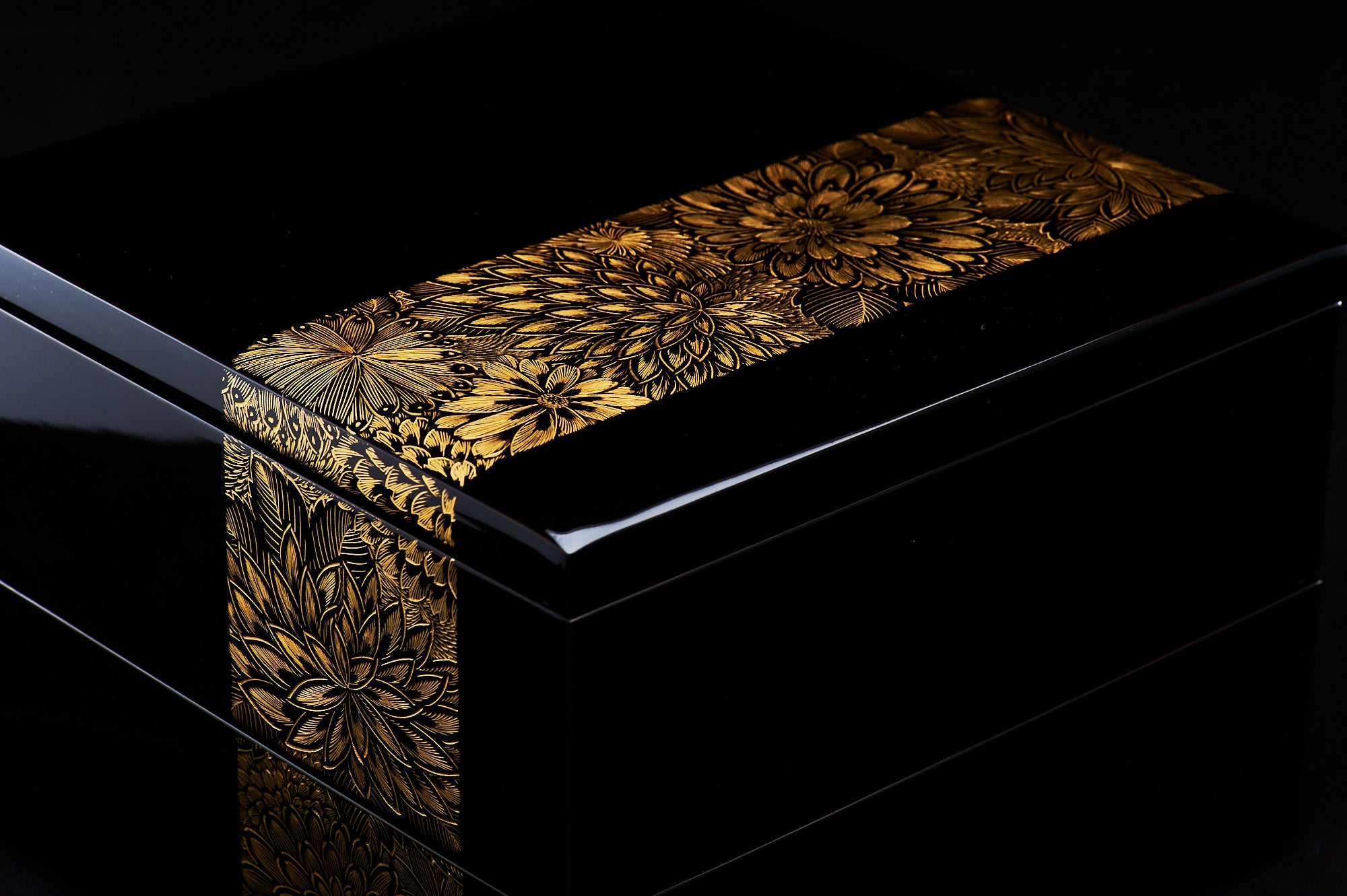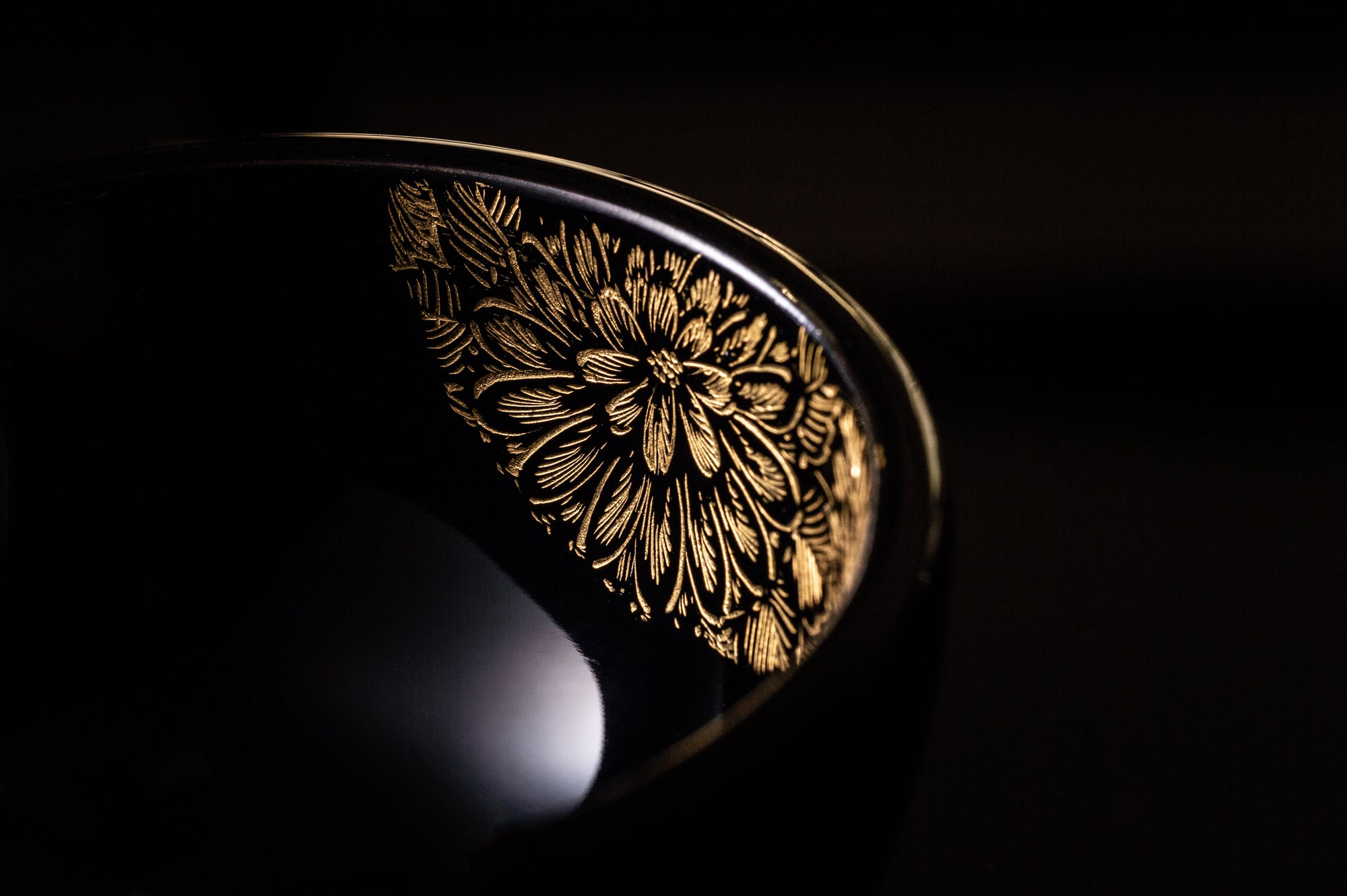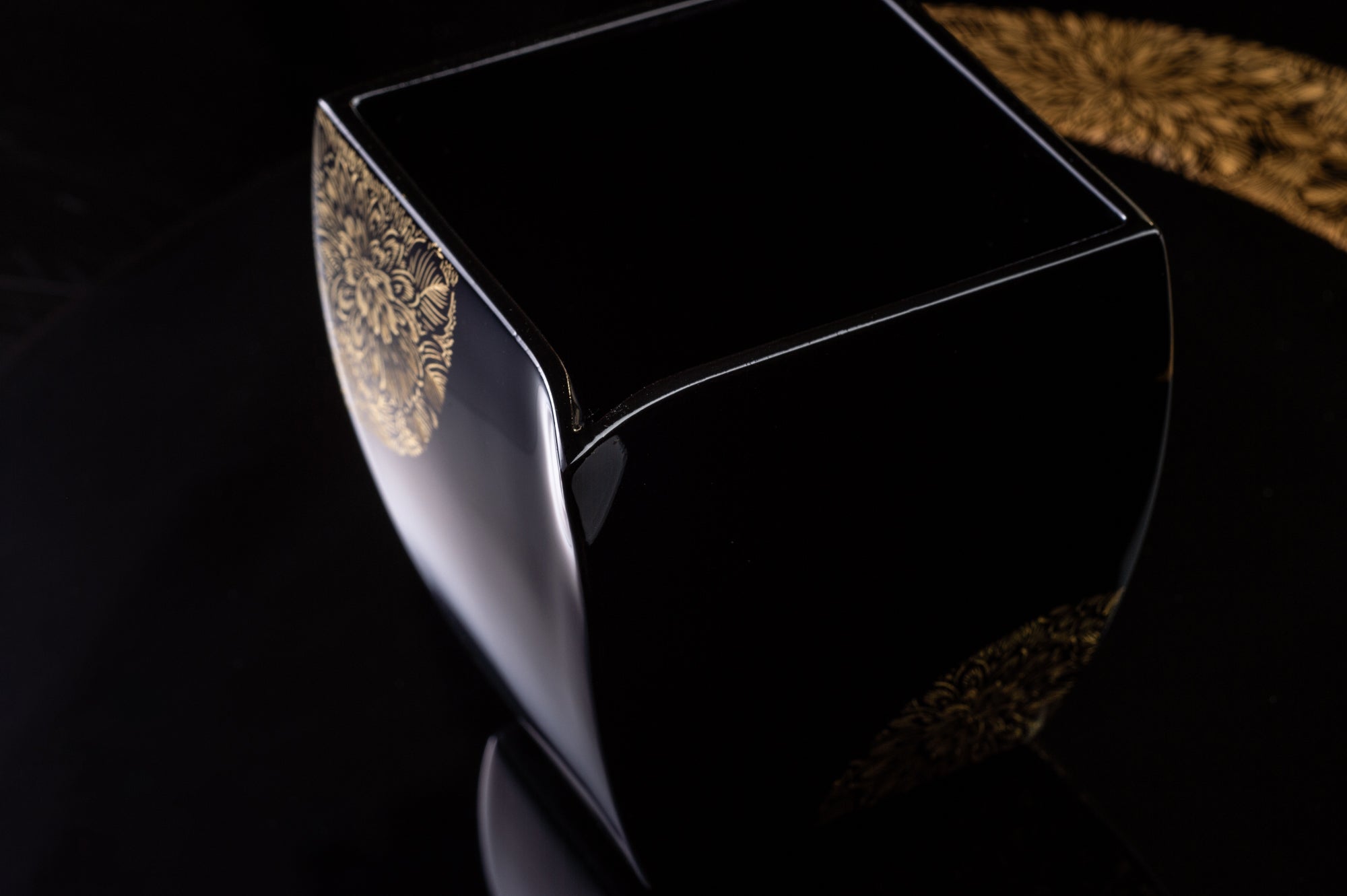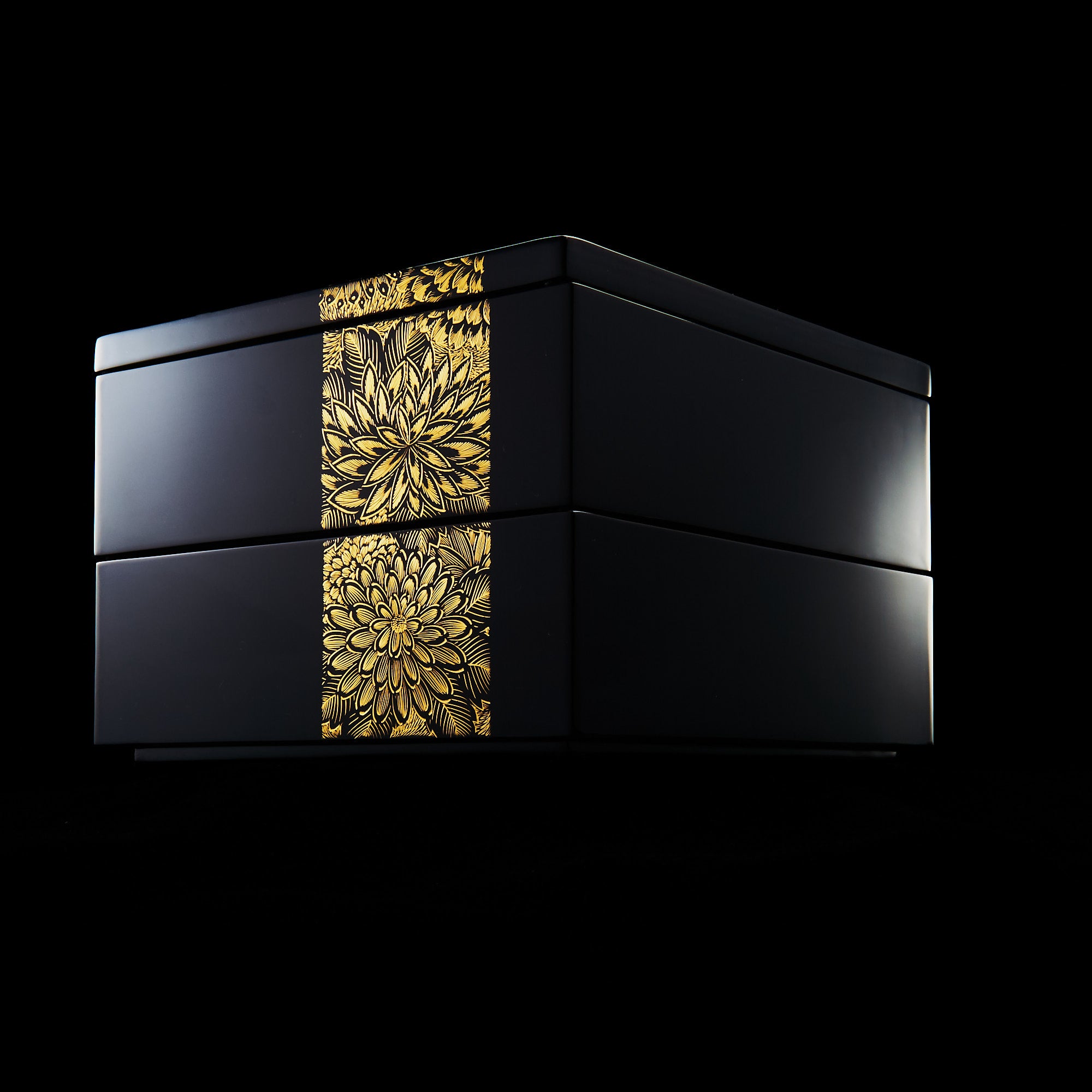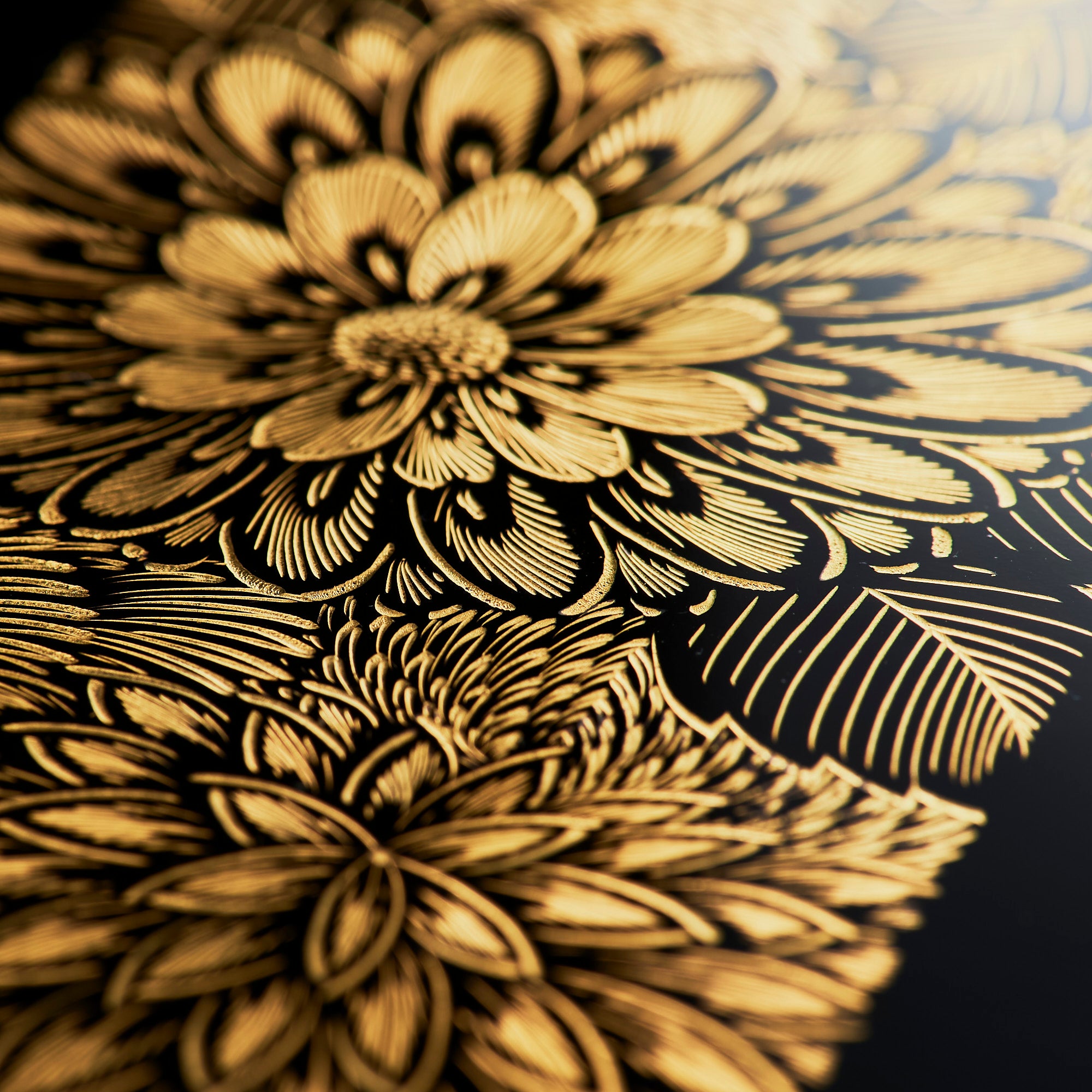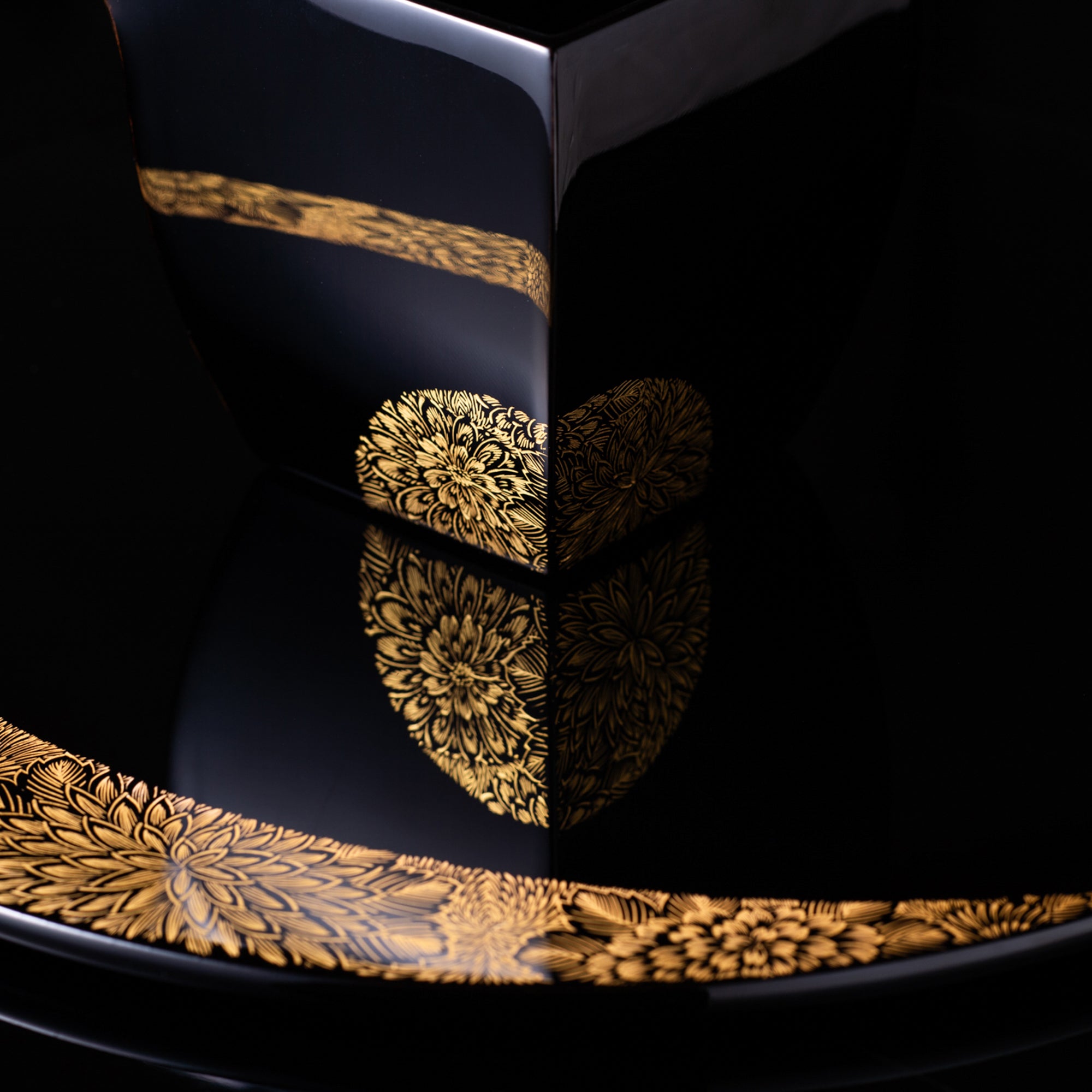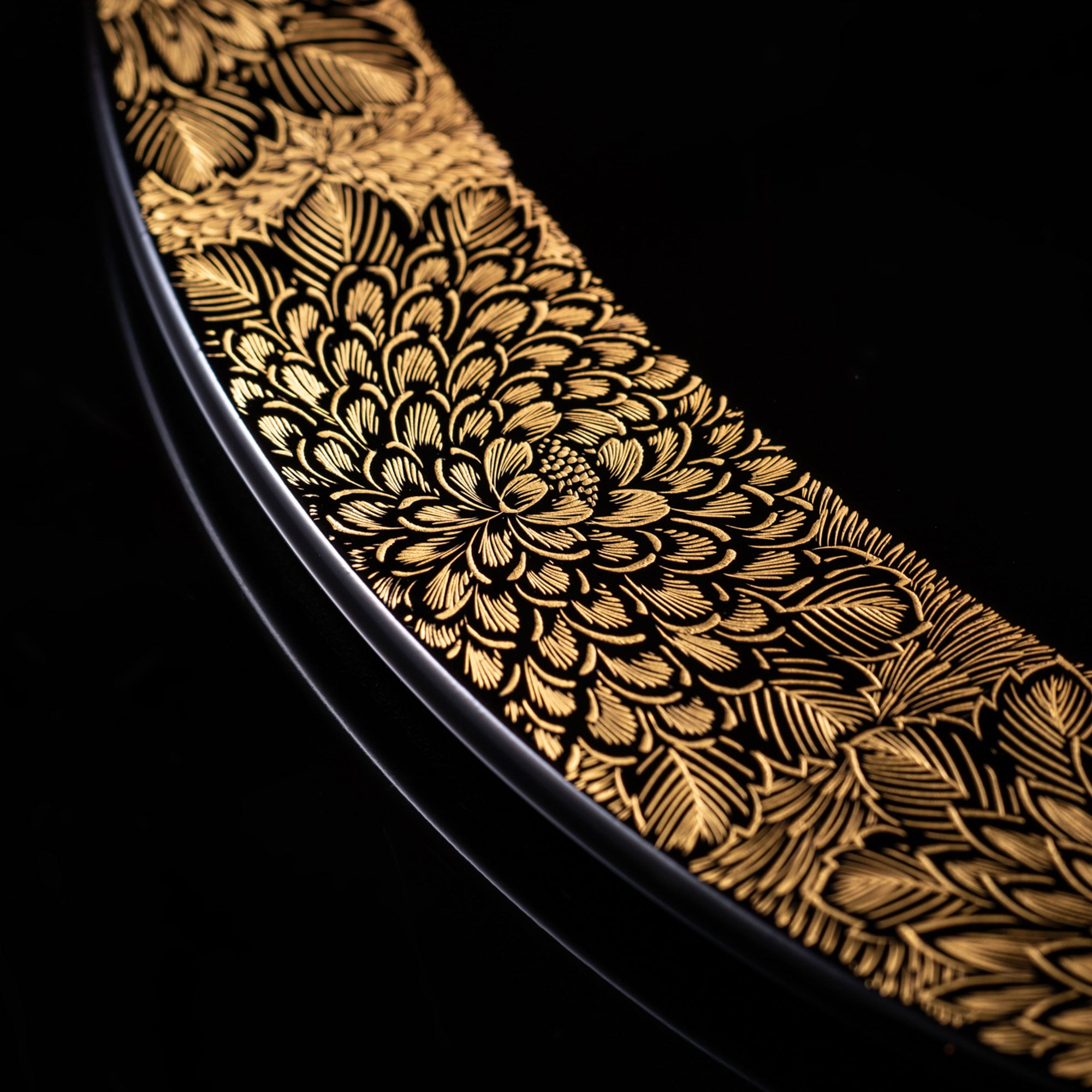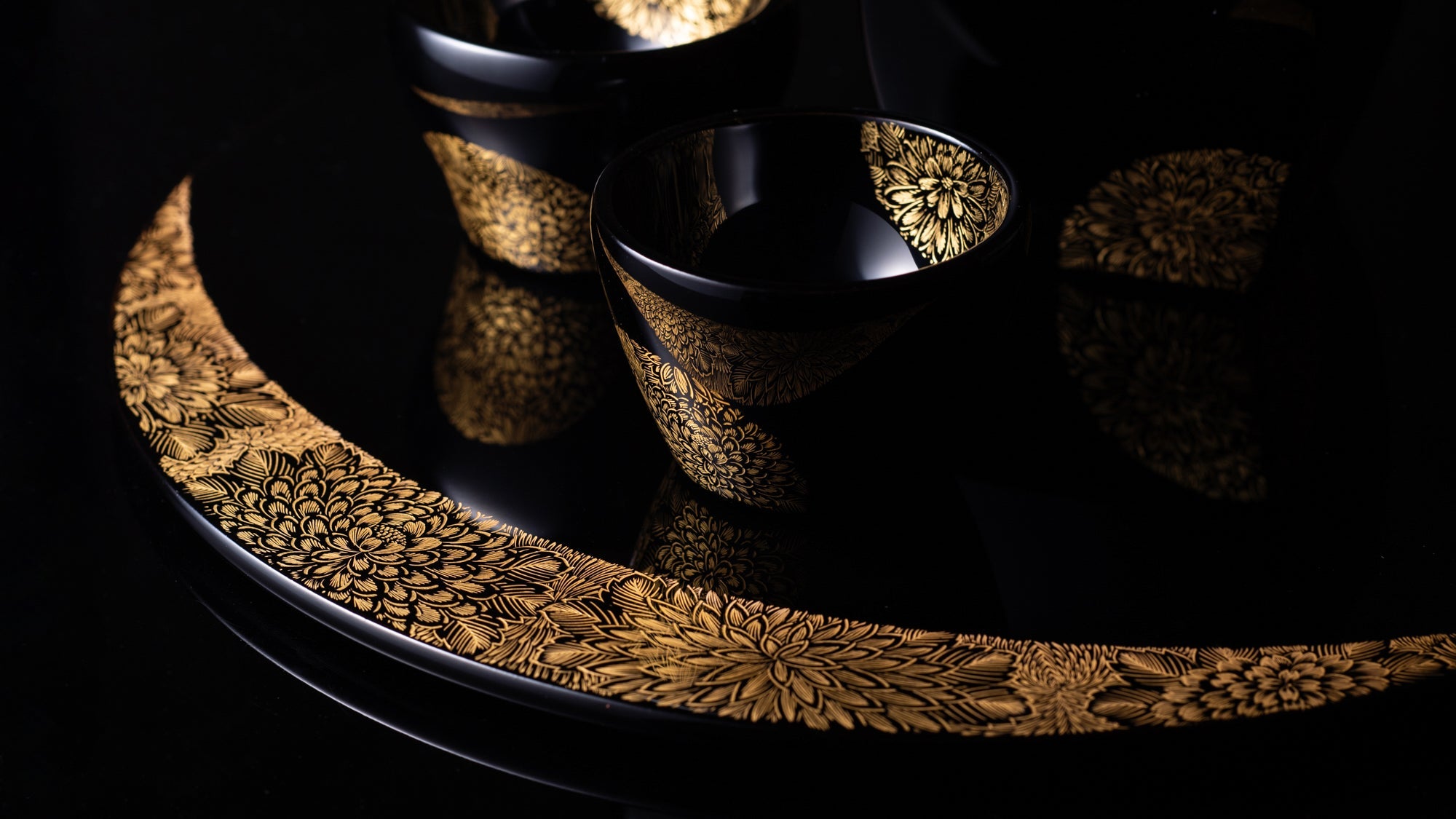
Embedded in Gold
Takade Eiji
Upon the pristine surface of Wajima lacquerware, master craftsman Takade Eiji carves a world of gold with the precise strokes of his many chisels. For over fifty years, he has dedicated himself to chinkin, a meticulous craft that embellishes lacquerware with finely carved lines and dots inlaid with gold. This artistry adds a layer of refinement and intricacy. His works reveal a lifetime of skill, patience, and unwavering dedication, yet Takade remains a humble craftsman, focused solely on bringing each piece to its rightful completion.
Engraving Elegance: Gold in Lacquer
Chinkin originated in China during the Song dynasty (960 CE–1279 CE) and evolved into a distinct art over time. By the Edo period (1603 CE–1868 CE), it had become a hallmark of Wajima lacquerware. In 1955, chinkin was designated an Important Intangible Cultural Property, highlighting its significance and cultural value.
This decorative technique involves engraving a lacquered surface with chisels of different sizes and shapes, a process that demands both precision and a deft hand given the lacquer's hardness. By adjusting the depth and angle of each engraving, Takade crafts designs that range from the most delicate and subtle to the strikingly bold. Once the lines and dots are carved, Takade meticulously applies gold leaf and powder into the grooves. As he carefully wipes away the excess, intricate designs in various shades of gold emerge with breathtaking clarity against a deep, polished black lacquer.
Mastery in chinkin lies in the balance; a cut too shallow will fail to hold the gold, while one too deep risks fracturing the lacquer. After fifty years of honing this craft, Takade knows that all incisions must be made with precision. In the hands of a master, every cut speaks to the enduring elegance of this ancient craft.
The Lasting Beauty of Gold in Takade's Chinkin Art
For Takade, chinkin is a dialogue with gold and lacquer. He begins by carefully hand-drawing each design on thin paper. Once the design is transferred onto the lacquered surface, he takes his chisels and begins carving.
His chisels become extensions of his hand, each movement deliberate and confident. Gold is inlaid with meticulous care, softly gleaming against the robust lacquer. Only as the gold settles into place does one truly witness how Takade’s sculpted dots and lines emerge, revealing a flowing beauty.
These elements coalesce into something larger and deeply harmonious, where the interplay of black lacquer and gold creates a sense of refinement—an understated luxury that resonates deeply and carries a timeless beauty that endures through the years.
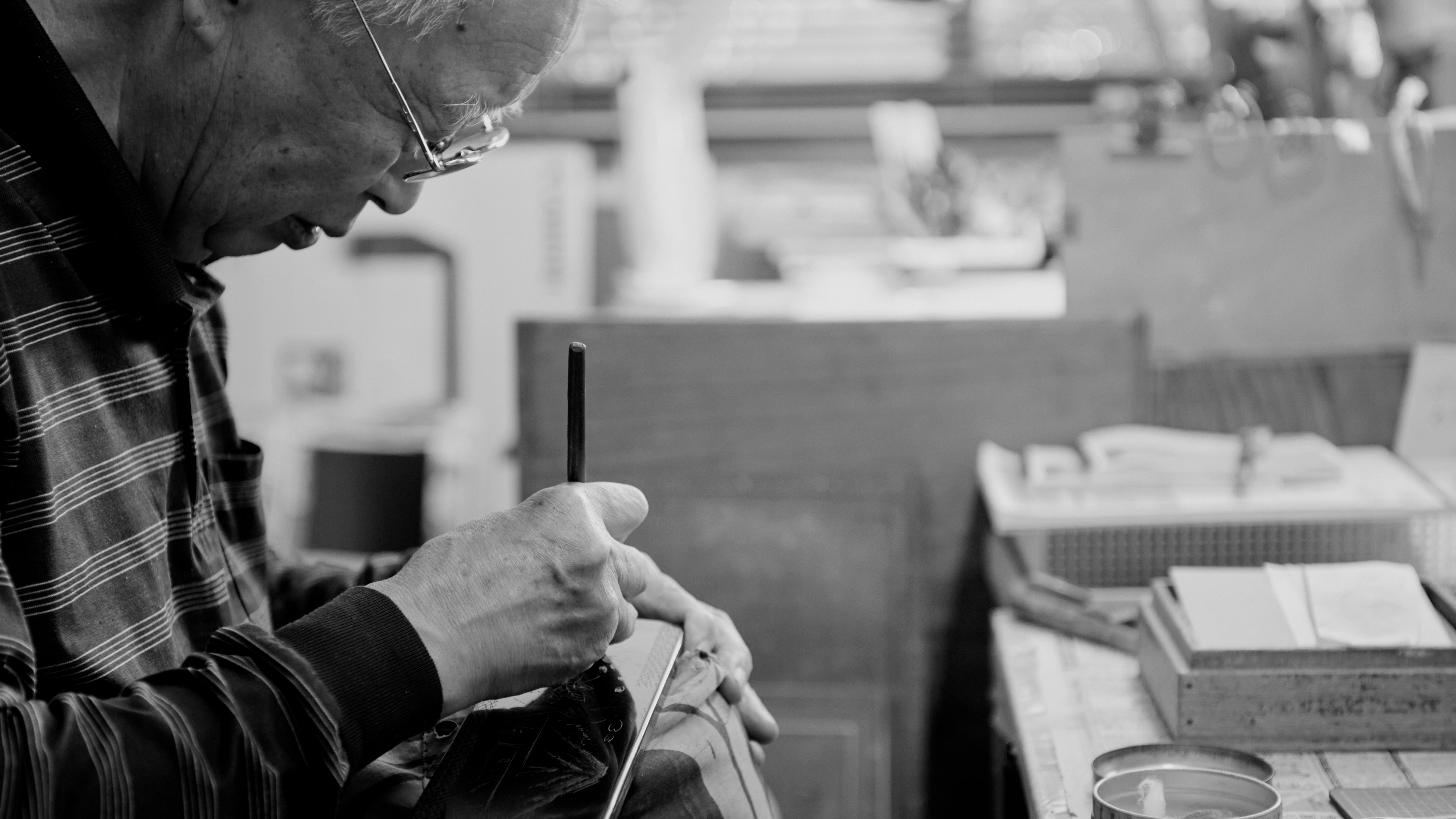
Biography
Takade Eiji, a master craftsman of the chinkin technique, began his journey at the age of 19. In 1967, he studied under Hase Wataru, honing his skills before graduating from the Ishikawa Prefectural Wajima Institute of Lacquer Arts in 1974. The following year, he established his own independent studio in Wajima City, where he continues to practice his craft to this day.
In 2019, Takade was honored with the Governor's Prize at the 4th Wajima Lacquerware Decorative Sample Exhibition. His work Tsubaki (Camellia) received the highest recognition at the same exhibition in 2022, earning the esteemed Governor's Prize once again.


